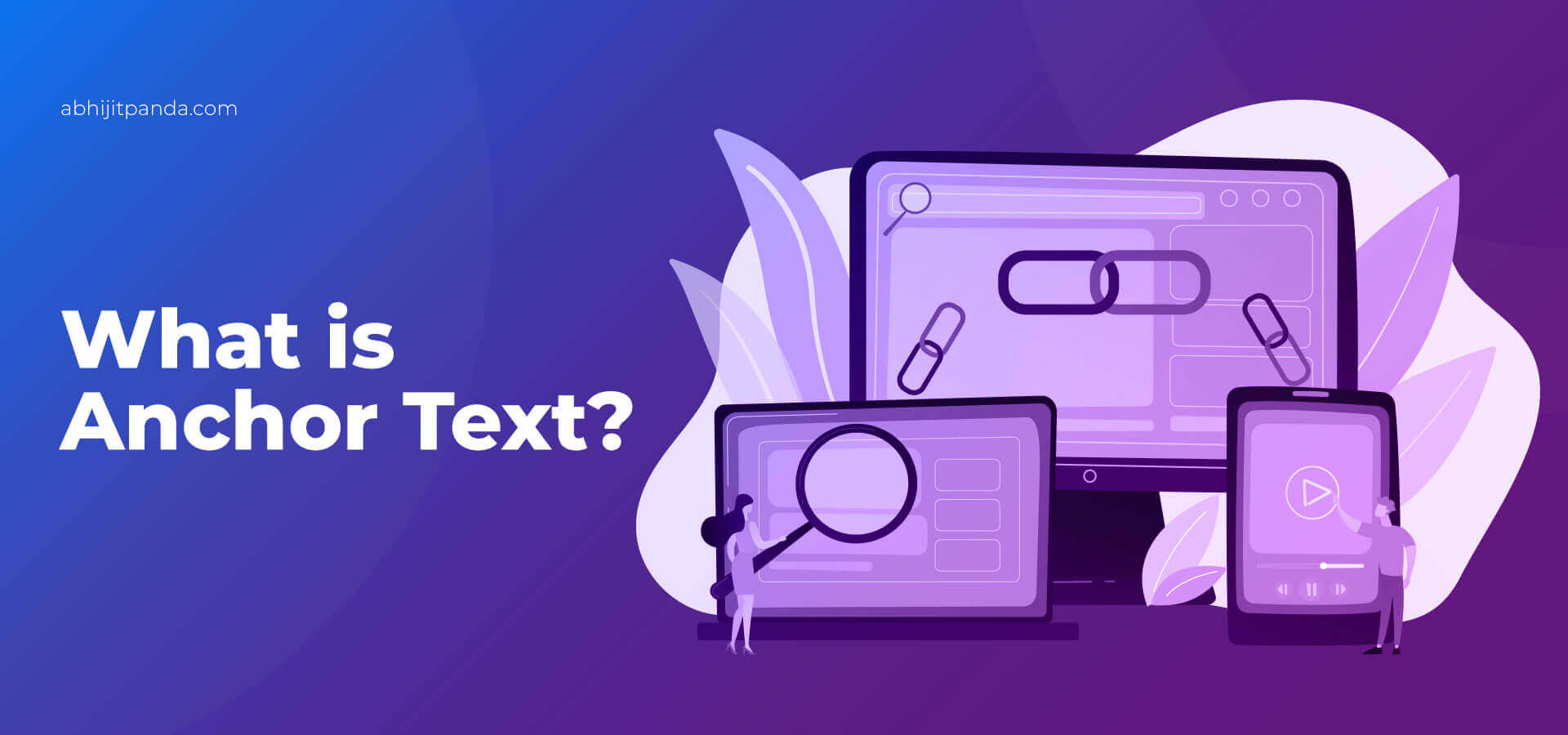 What is Anchor Text SEO?
What is Anchor Text SEO?
As an integral part of web pages, hyperlinks make it easier for visitors to move to another web page or another section within the same web page simply by clicking on a word, phrase, or image. In addition to improving user experience, the hyperlinks also directly impact the web page’s search engine visibility. While implementing search engine optimization (SEO) strategies, digital marketers focus on optimizing the link text, anchor text, or link label.
What is Anchor Text?
According to Wikipedia,
‘The anchor text, link label or link text is the visible, clickable text in an HTML hyperlink. The term “anchor” was used in older versions of the HTML specification for what is currently referred to as the a element, or <a>. The HTML specification does not have a specific term for anchor text, but refers to it as “text that the a element wraps around”.’
As the visible and clickable aspect of a hyperlink, anchor text helps both search engines and website visitors to understand a hyperlink clearly. The website visitors and searchers can refer to the anchor text to understand what information they can access by clicking or tapping on the hyperlink.
At the same time, the anchor texts help search engines understand what the linked page contains. While creating internal and external links, the content creators and digital marketers use a wide range of anchor texts – site name, URL, article title, generic links, branded links, exact keywords, related keywords, image links, and partially-matching keywords.
Why Anchor Text is Important for SEO?
Major search engines like Google and Bing use links as a tool to discover, understand, and rank the content on a website. Hence, both internal links and external links contribute hugely towards improving a web page’s search engine performance. Anchor texts add context to hyperlinks. Hence, the search engines refer to the anchor text to ascertain the value of a hyperlink by understanding where the link will lead users.
According to Search Engine Roundtable,
“Anchor text is a signal Google uses for ranking purposes. Yes, Google can ignore spammy links that try to manipulate rankings but normal anchor text does help Google rank a page for what the anchor text says about the page. Hence giving Google more context about the page.”
The SEO Starter Guide released by Google recommends digital marketers make it easier for both search engines and users to understand what the linked pages contain using appropriate anchor texts. Also, Google helps digital marketers create and use appropriate anchor texts by sharing a set of best practices. Hence, digital marketers can easily choose the appropriate anchor texts for search engines by implementing the best practices shared by Google.
Anchor Text SEO: How to Improve a Website’s Search Engine Performance by Optimizing Anchor Texts?
Make the Anchor Text Appear Natural
The anchor text will improve the web page’s search engine visibility only when it fits into the content naturally and seamlessly. While placing hyperlinks, content creators and digital marketers must spend some time reading and understanding the content surrounding the hyperlink. They need to ensure that the anchor text appears natural without affecting the flow and readability of the content.
Match the Anchor Text to Relevant Content
An anchor text appears manipulative when it does not match the content it is linked to. Digital marketers need to ensure that the anchor text makes the users understand what content they can expect and access after clicking on the hyperlink. The anchor text must not misguide or trick the readers in any way.
Keep the Anchor Text Concise but Descriptive
Google recommends digital marketers keep the anchor text concise using either a short phrase or a few words. The search engine still advises content creators to make the anchor text depict the nature and context of the hyperlink by keeping the link text descriptive. Also, it advises digital marketers not to use short paragraphs or long sentences as anchor texts.
Differentiate the Anchor Texts from Regular Text
While reading content, the searchers or website visitors will click on a hyperlink when they identify it instantly. Digital marketers can make it easier for readers to identify hyperlinks by differentiating the anchor texts from regular text. In addition to keeping the link text clickable, they should consider formatting the anchor texts. However, Google advises digital marketers not to format anchor texts using text styling options and CSS.
Place the Anchor Texts Proportionately
A digital marketer can improve a website’s SEO health only by using the right type of anchor text in the right proportion. They must distribute the anchor texts proportionately to minimize the number of exact match keywords and partially match keywords. The smarter digital marketers keep the percentage of exact match keywords between 1% and 2% and the percentage of partially matching keywords between 1% and 5%. At the same time, they increase the percentage of branded anchor texts to 50%.
Don’t Use Keyword-Rich Anchor Texts in Internal Links
Google advises digital marketers to make it easier for visitors and search engines to navigate the website using anchor texts must internal links. But it forbids digital marketers from creating unnecessary hyperlinks that do not help visitors to navigate the website. The search engine advises content creators to avoid lengthy phrases and keyword-filled text while creating anchor texts for internal links.
Optimize Images Using Alt Tag
Many digital marketers these days use image links to differentiate the hyperlinks from the textual content. Google understands the image links based on the alt tag. When the alt tag does not convey relevant information about the hyperlink, the search engine considers that the hyperlink has a no-text anchor. Digital marketers must use the alt tag to convert the image link into an appropriate anchor text for search engines.
Don’t Over-optimize the Anchor Texts
Search engines often penalize websites whose user experience is impacted adversely due to over-optimization or manipulation of anchor texts. The Penguin algorithm updates rolled out by Google penalized millions of websites by targeting manipulative anchor texts. The algorithm changes made by Google also keep targeting the manipulative and over-optimized anchor texts. While optimizing SEO strategies, digital marketers must adopt the best practices recommended by Google.
As the visible and clickable text in a hyperlink, anchor text impacts the web page’s user experience and search engine performance at once. While implementing SEO strategies, digital marketers must use different types of anchor texts and optimize each anchor text for search engines. But they must not affect the web page’s search engine visibility by ensuring that the anchor texts are both relevant and natural.









Leave a Reply